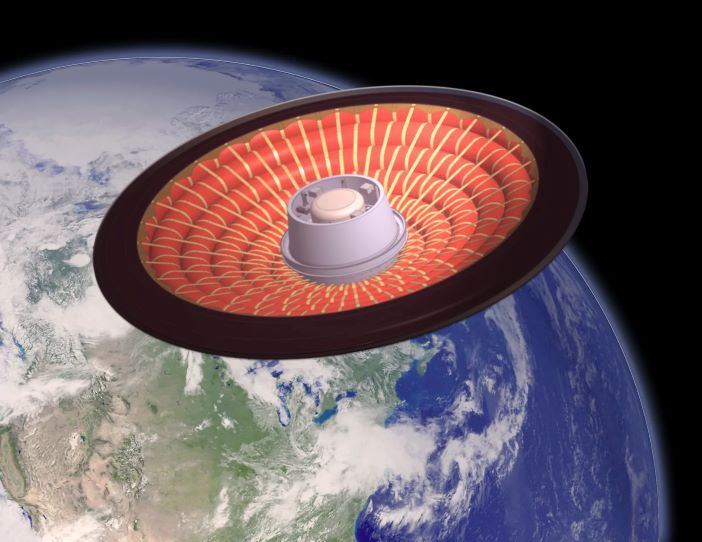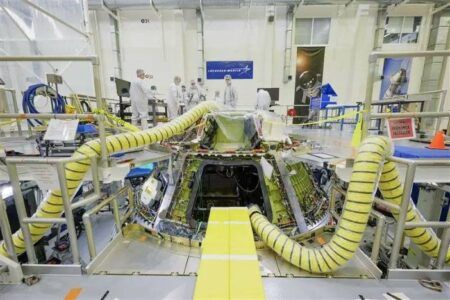Bringing spacecraft down through planetary atmospheres is a risky endeavor, subject to immense speeds and intense heat. However, if these two problems can be solved large objects and cargo can be returned to Earth or landed on other planets safely and without damage.
A consortium of nine European organizations and companies, backed by a €15 million (US$16.3 million) European Commission grant, has been assembled to develop ICARUS (Inflatable Concept Aeroshell for the Recovery of a re-Usable launcher Stage), an inflatable heat shield (IHS) project. The initial four year project will culminate with a launch, in-space testing and verification and aims to demonstrate the feasibility of IHS for recovering rocket stages from space.
Background heat
Heat shields are not a new idea, and the technology has evolved over several decades. During the 1950s ablative heat shields were developed to protect spacecraft during re-entry. They were designed for a single use, by burning away compounds that covered the surface to form a glassy barrier that cooled capsules such as Apollo or Soyuz.
By the 1980s heat sinks in the form of ceramic heat shield tiles were developed for use on the Space Shuttle and SpaceX’s Starship. The shields were made of ceramic tiles which replaced the heavier metal tiles used previously. The ceramics used included heat-absorbent silica, for example on NASA’s Space Shuttle, and heat-resistant carbon-fibre reinforced carbon. However, these material’s weight, ever the enemy in aerospace, remained an intrinsic problem with their use.
There has been a recent revival in the use of ablative coatings. Epoxy resin in a fiberglass honeycomb is being used on NASA’s Orion spacecraft. The material retains the same lightweight and cooling advantages as it did in the 1950s, but does not have the wider benefits of an IHS or fulfil all the latter’s functions.
Inflatable heat shields offer significant advantages in terms of weight and space because they are lightweight and can be packed tightly, so are perfect for a range of applications. They have been developed by NASA over the last 20 years for applications such as bringing back rocket stages and experiments from space, and even landing cargo on Mars.
Professor Ali Gülhan is head of the supersonic and hypersonic technologies department at the German Aerospace Center (DLR) and is involved in the European ICARUS project. He says, “Most atmospheric entry vehicles are equipped with rigid thermal protection systems to withstand the high aerothermal loads during the hypersonic entry phase.
“Heavy payloads and low-density atmospheres lead to high ballistic coefficients and a longer deceleration phase of the vehicle. Increasing the drag area of the aeroshell could solve this problem.
“However, the limited size of the launcher or fairing is a restriction. Inflatable heat shields that can be folded in the launcher and deployed before entering the atmosphere are an elegant solution. Depending on the size of the deployed shield and the atmospheric properties, even very heavy payloads can be slowed down and landed safely.”

More for less
“An IHS acts as a thermal protection system and as a decelerator and can enable safe re-entry and deceleration of a spacecraft after de-orbiting,” says Simone Centuori, CEO of Deimos, which heads up the ICARUS project.
An IHS’ flexible thermal protection system (TPS) and inflatable structure work together in tight collaboration. The shield is stowed in a folded configuration until re-entering a planet’s atmosphere, when it is unfolded and inflated, decelerating and shielding the spacecraft.
The main advantage of the system is its flexibility. “Inflatable aeroshells can be more easily integrated into existing launcher systems and used for heavy re-entry configurations,” says Gülhan.
An IHS has a larger diameter than a solid heatshield when inflated. This reduces the ballistic coefficient of a re-entry vehicle. “This in turn reduces the thermal and mechanical loads during re-entry,” Gülhan says.
Another key advantage over conventional rigid heatshields is a greater deceleration / protection surface at a much lower mass and volume. The potential cost saving is another. The technology aims to enable the reusability of launchers, stages, segments and engines. Reusable satellites or sections of space stations could also be returned to Earth intact using IHS technology.
NASA’s pioneering work in IHS technology includes the successful flights of the HIAD (Hypersonic Inflatable Atmospheric Decelerator) on suborbital rockets. Most recently, NASA brought back more than one metric ton from Low Earth Orbit with the LOFTID (The Low-Earth Orbit Flight Test of an Inflatable Decelerator) inflatable heat shield. Sebastian Klaus, CEO of Atmos Space Group says, “These heat shields are also contributing to the research of rocket reusability. United Launch Alliance (ULA) is considering using IHS technology to bring back rocket engines for reuse.
“In the long run, IHS may also contribute to bringing cargo to Mars, or back from orbit to Earth.”
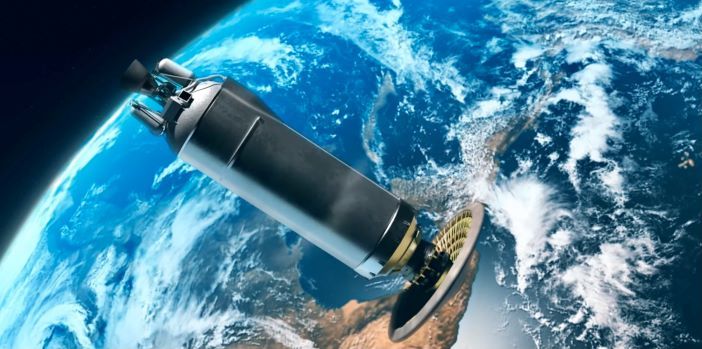
Unfolding protection
ICARUS is made up of a cold inflatable structure, which is inflated using gas generators. This inflatable structure is protected by insulating layers and a flexible TPS made from ceramic fiber.
The ICARUS project grew out of the EFESTO (European Flexible hEat Shields advanced TPS design and tests for future in-Orbit demonstration) project, which began in 2019 to increase European knowledge and capability relating to IHS technology to a point where it might be made available for future space missions.
Designed with scalability in mind, ICARUS’ inflatable shield comprises of a flexible skirt enveloping the inflatable structure. The skirt is a stack of layers of materials which the program is keeping confidential for now. It ensures protection against overheating during re-entry, so that the inflatable structure retains its shape for deceleration and a safe landing. A two-fold function is activated upon inflation when it starts to experience the presence of an atmosphere.
Discussions relating to ICARUS began at the end of 2022, development work starts this year and the launch of the first demonstrator is planned for 2028.
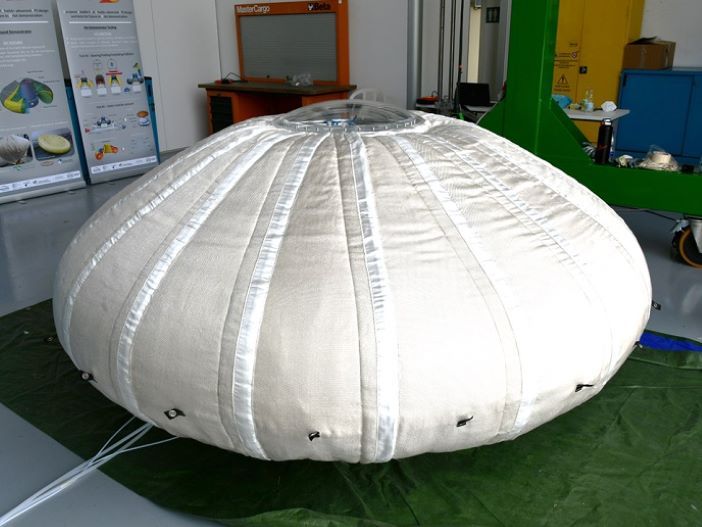
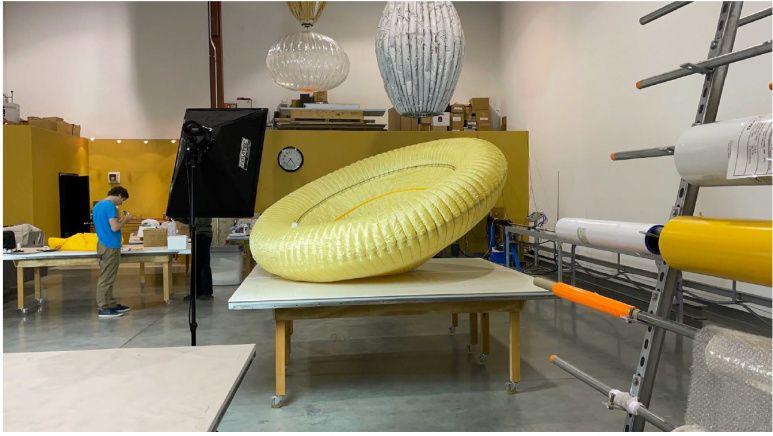
The phased development plan consists of system requirements review at approximately six months, a preliminary design review before after about 15 months, a critical design review towards 30 months, and then the demonstration flight aboard a sounding rocket.
Detailed design verification and qualification tests on the ground for various subsystems will be completed as part of the critical design review in 2026. Researchers on ICARUS believe a successful first flight will not conclude the project, but mark the beginning of an in-flight testing campaign.
Testing inflatable heat shields
The early and ongoing testing of the system on the ground and in space are crucial. According to Centuori, the flight test will put the experimental spacecraft in a re-entry condition to trigger a meaningful thermo-mechanical environment. “This is typically obtained with an apogee of 250-280km. The potential and envisaged rocket solution can deliver that performance,” he says.
The flight test should also enable “system level verification” in terms of stowability, foldability, deploy-ability, inflatability and most of all, the capability of the shield to maintain the needed shape during re-entry.
In addition to several ground experiments to demonstrate or verify the functionality of selected subsystems, a complete inflatable aeroshell payload will be tested in a ballistic flight with a two-stage sounding rocket configuration.
“The separation of the payload from the launcher and the deployment of the folded inflatable structure are critical events during the flight experiment. Further challenges are the instrumentation of the flexible / inflatable structure and the aerodynamic stability of the re-entry configuration after separation from the rocket,” says Gülhan.
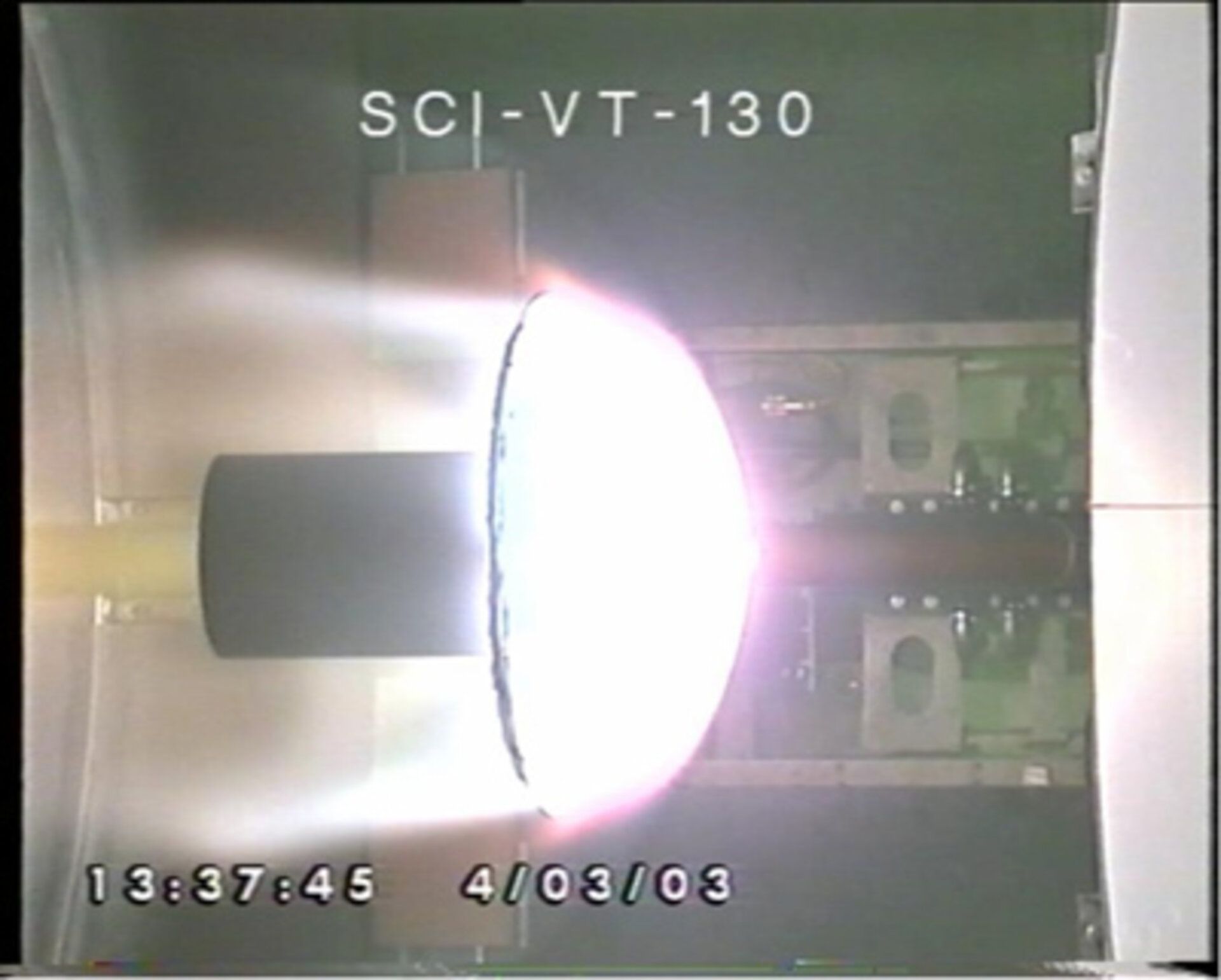
Before the 2028 launch, sub-scale test articles will also be tested in the Italian Space Agency CIRA’s Scirocco Plasma Wind Tunnel. Klaus says, “A plasma wind tunnel recreates the conditions during atmospheric re-entry on the ground.
“Inside a vacuum chamber, a plasma jet is created at temperatures of several thousand degrees. Test samples, such as the heat shield components are then exposed to this plasma jet. Scirocco is one of the largest plasma wind tunnels in the world, allowing us to test a subscale model of ICARUS.”
Atmos will additionally test the mechanical stresses on the inflatable structure at full-scale to make sure it can withstand all the forces experienced during re-entry.
“To test the inflatable structure for the static loads during flight, a vacuum pool is used. This simulates the aerodynamic pressure difference between the front and leeward side, so that deformations can be measured and compared with simulations,” says Klaus.


